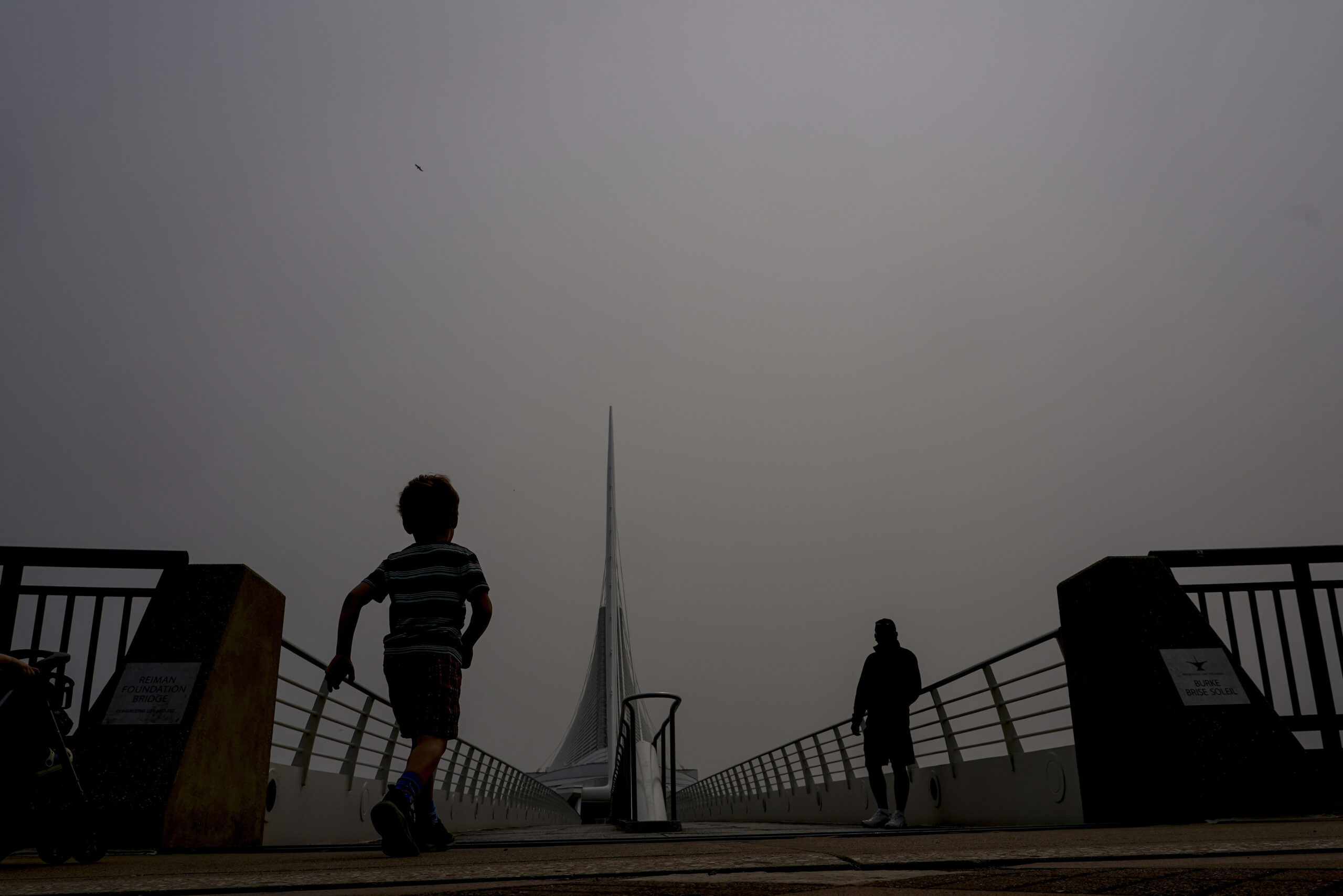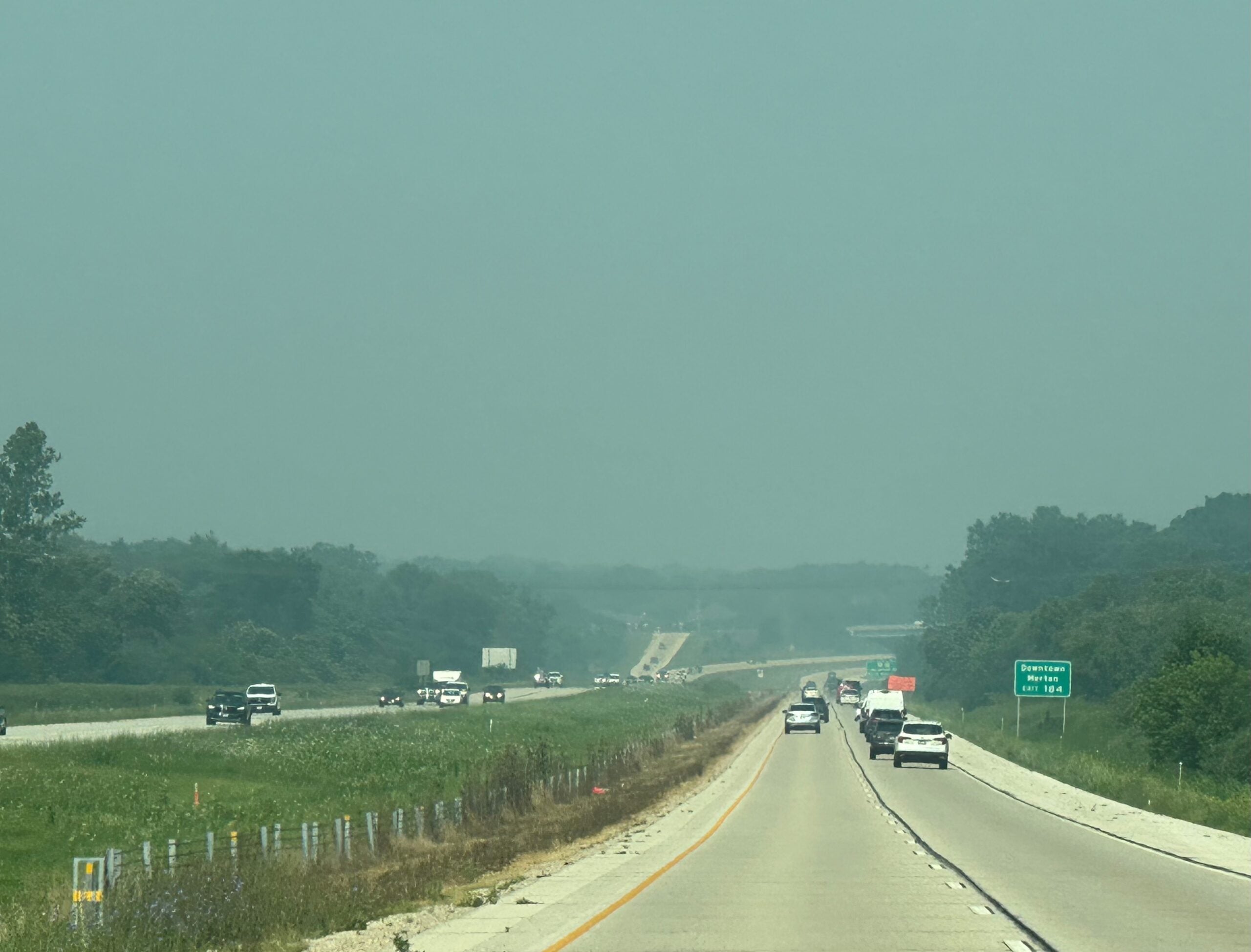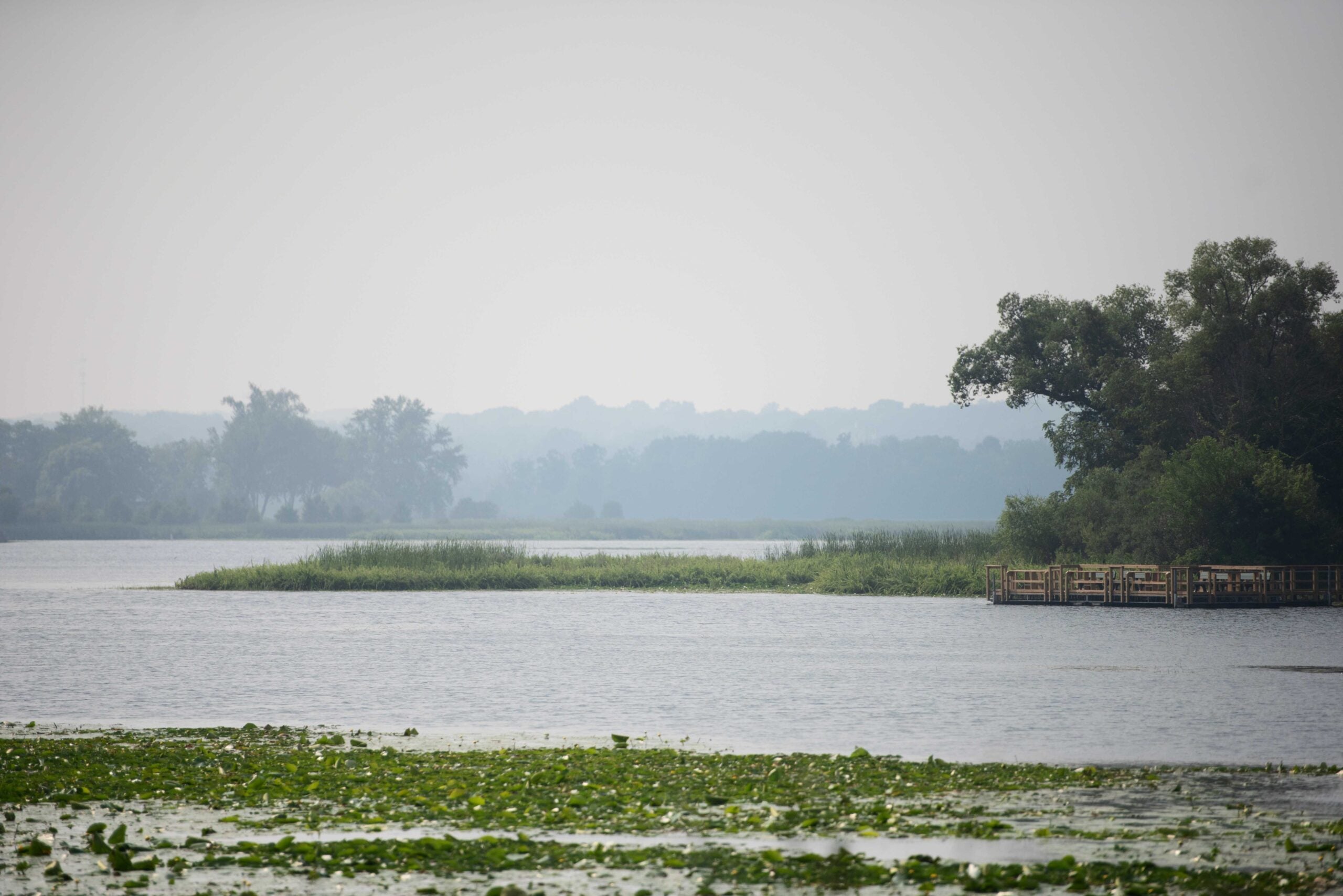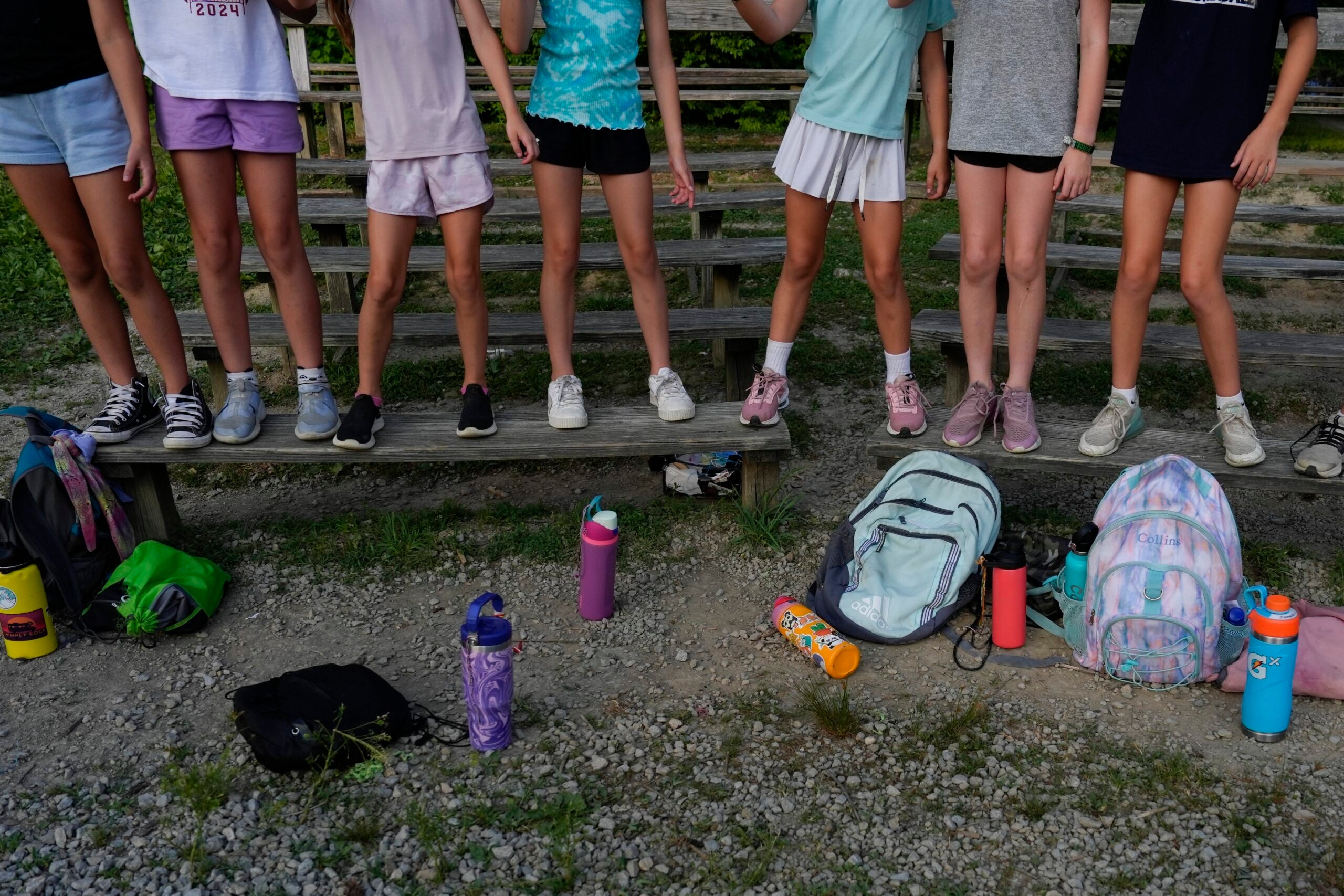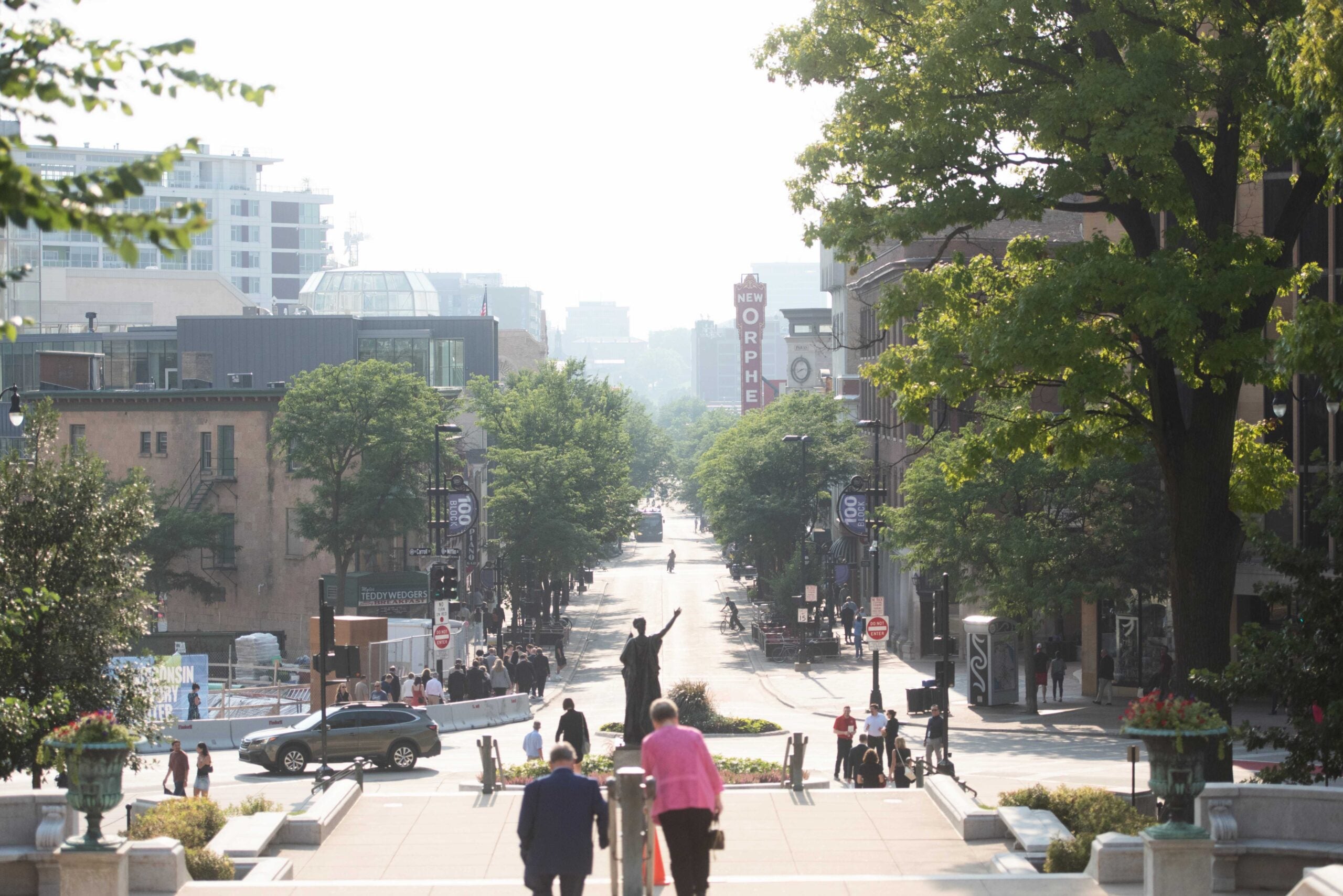In May, smoke from Canadian wildfires blowing into Wisconsin prompted the state’s first air quality advisory of the year.
It’s too early to tell if there will be intense episodes of orange skies and the persistent smell of smoke that blanketed much of the state last summer. But there are ways we can be prepared to protect ourselves.
“Morning Edition” host Alex Crowe spoke with Craig Czarnecki, the state Department of Natural Resources’ Air Management Program outreach coordinator, about how to stay safe.
News with a little more humanity
WPR’s “Wisconsin Today” newsletter keeps you connected to the state you love without feeling overwhelmed. No paywall. No agenda. No corporate filter.
This interview was edited for brevity and clarity.
Alex Crowe: Larger and more frequent wildfires are a growing public health concern. How can we prepare for the next time there is poor air quality?
Craig Czarnecki: The biggest thing that we’re trying to tell folks this time of year as we’re getting into wildfire season is to know where to find your air quality information and how you’re going to stay informed. Now is the time to start planning. Make sure you have plans in place to protect not only your health but also the health of your family and your loved ones.
Think about plans for modifying outdoor activities. Protect your indoor air quality. Then make special preparations or arrangements for anyone who may be in a sensitive group of people like children, older adults, those who are pregnant and people with heart or lung disease — most of the folks who are most sensitive to the effects of wildfire smoke.
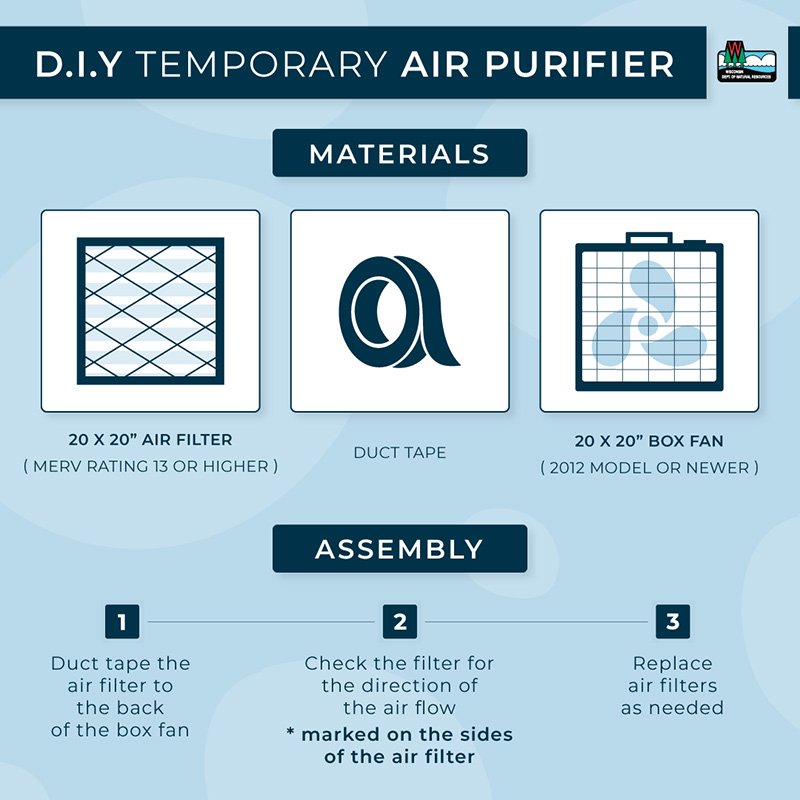
AC: Those folks who are not able to stay indoors or keep the windows closed when that smoke starts rolling through — what do you recommend they do?
CC: We do have a few different resources on our DNR website. We created a wildfire smoke page. If you don’t have air conditioning or something like that in your apartment or home, one of the things we suggest is that people can make a homemade air purifier. All you’d need is a box fan and a furnace filter. We actually have some steps on how folks can can create one of those.
That’ll help filter some of that air in your home even without any central air or anything like that.
(Another thing people can use are) N95 masks. I know many of us still have those. Those are able to filter out some of those small inhalable particles.
AC: On “Morning Edition,” and on other programs, they have talked about zombie fires — fires from last year that didn’t really go out and have now come back. Is that something the DNR has been monitoring?
CC: We’ve been kind of keeping an eye on things most of the winter, especially throughout kind of late winter and early spring here. A lot of Canada has drought conditions. And some of those fires didn’t even go out. They just smoldered.
We have similar conditions to what we saw last year. But it’s still too early to tell whether or not we’ll have the same significant impacts we had last year.
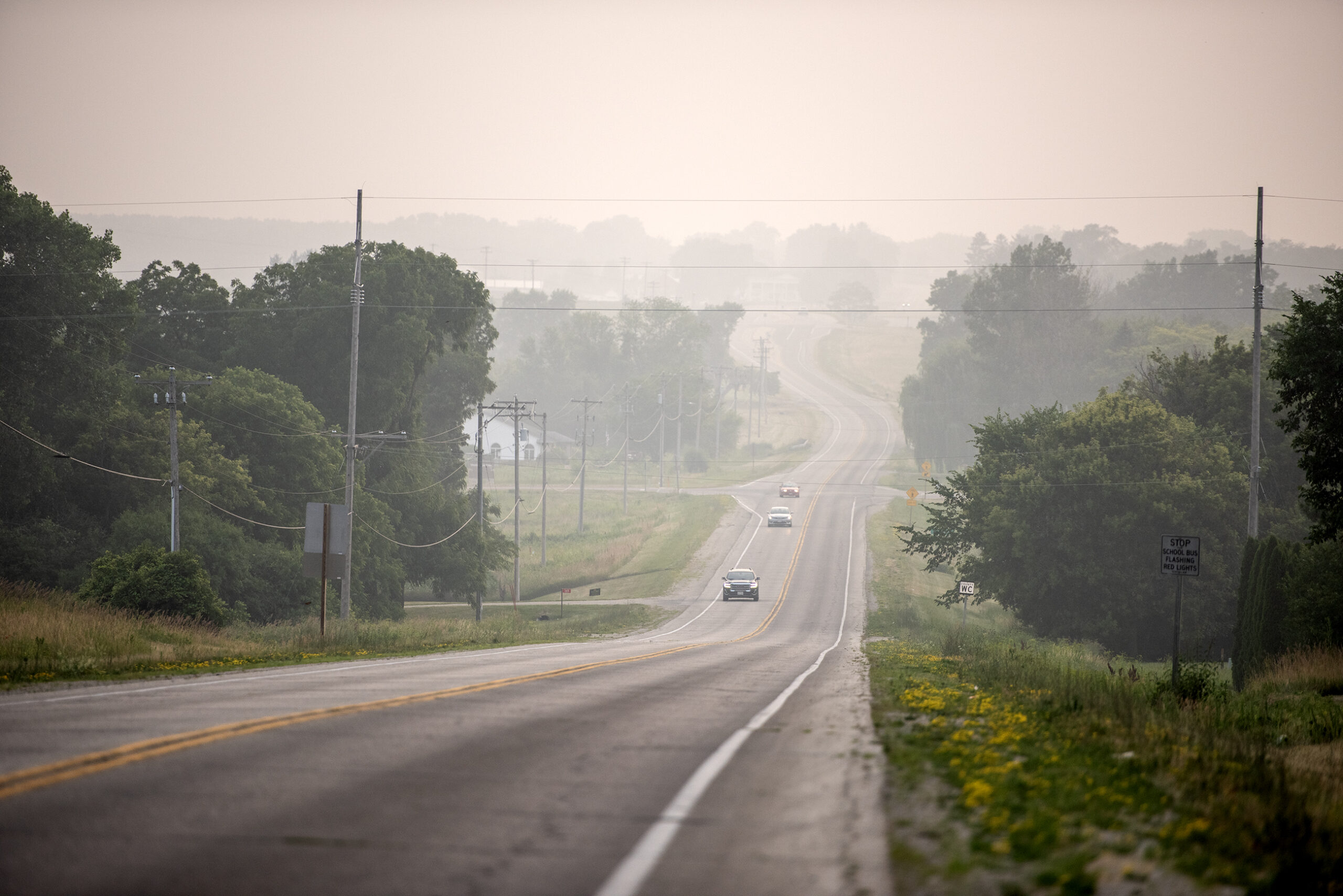
AC: What are the signs and symptoms that signal maybe it’s time to go back inside, maybe the air quality is not great right now?
CC: Coughing and shortness of breath, those are going to be the two big main ones. If you’re out for a run and you’re usually not feeling those kinds of symptoms, and all of a sudden those come on, that would be a sign to take a break. Take it easy, maybe move indoors.
That’s especially true for those in sensitive groups — people with heart and lung issues or ailments, the elderly, young children. Definitely be watching out for coughing, shortness of breath, wheezing, things like that. Those will be signs to take a break and take things inside, if possible.
Wisconsin Public Radio, © Copyright 2025, Board of Regents of the University of Wisconsin System and Wisconsin Educational Communications Board.

